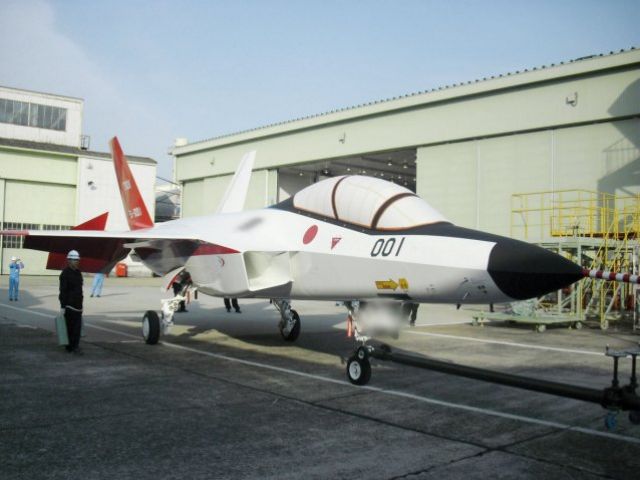Japanese Defense Ministry plans to conduct performance tests on ATD-X fighter jet prototype in 2015
| a | |||
Aviation defence equipment technology |
|||
Performance
tests on ATD-X fighter jet prototype expected for 2015 |
|||
Japanese
Defense Ministry plans
to conduct performance tests on ATD-X fighter jet prototype for 2015 |
|||
The
Japanese Defense Ministry’s efforts to develop an all-domestic fighter
jet, Japan’s first since World War II, are moving into full swing.
A test model under development by Mitsubishi Heavy Industries Ltd. is
expected to make its maiden flight in mid-January, reported today the
Japan Times. |
|||
 The ATD-X jet
fighter is being built by Mitsubishi Heavy Industries (MHI) in co-operation
with the Japanese Ministry of Defense's Technical Research and Development
Institute (TRDI)
The ATD-X jet
fighter is being built by Mitsubishi Heavy Industries (MHI) in co-operation
with the Japanese Ministry of Defense's Technical Research and Development
Institute (TRDI) |
|||
The
Japan's Defense Ministry plans to conduct performance tests in fiscal
2015 and decide by fiscal 2018 whether to put the plane into use.
“The
domestic development of a fighter jet is a long-cherished wish,”
a senior ministry official said. “We hope to achieve it
by any means.” The test model, which is 14 meters long, 9 meters wide and 4 meters high, has stealth capabilities that make it difficult to detect by radar, as the fuselage has a radio-wave absorbing coating made of carbon fiber. The engines were developed by IHI Corp. In the 1980s, Japan planned to develop the F-2 fighter on its own, but it eventually settled for joint development with the United States, as Washington requested. “We cannot indefinitely rely on a foreign country for fighter development,” said a senior official with the Air Self-Defense Force, noting that the security environment has seen rapid changes due in part to the rise of China. The ministry began research on domestic fighter development in fiscal 2009, spending a total of ¥39.2 billion ($325 mn) through fiscal 2014. In its budget request for fiscal 2015, which starts in April, the ministry plans to seek ¥41.2 billion ($341 mn), more than the total for the past six years, to speed up development, officials said. Behind its obsession with domestic development, the ministry is setting its sights on a Japanese fighter that can be used as the basis for international joint development. The relaxation in April 2014 of the ban on arms exports allows Japan to provide military technologies and parts to other countries under certain conditions. “By gaining experience in domestic development and acquiring related technologies, Japan will be able to take the initiative for future joint development,” a government official said. |
|||


























